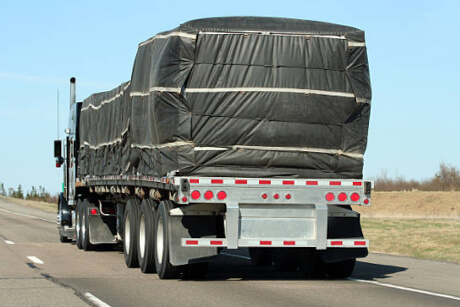Tarps News Categories
Analysis of Heavy Duty Tarps
In today's market, Heavy Duty Tarps are among the key products widely utilized across various industries. Whether in construction, agriculture, transportation, or emergency situations, these durable waterproof tarps play crucial roles. This article delves into an analysis of Heavy Duty Tarps, exploring their applications across different sectors, material characteristics, and market trends.

Applications
1. Construction: On construction sites, Heavy Duty Tarps serve as covers to shield building materials from weather impacts. They are waterproof, wind-resistant, and capable of withstanding certain levels of physical damage such as tearing and puncturing.

2. Agriculture: Farmers commonly use Heavy Duty Tarps to cover crops, protecting them from severe cold, storms, or bird damage. These tarps also find utility in temporary storage or shading, providing additional protection for farms.

3. Transportation: Heavy Duty Tarps are employed to secure and safeguard cargo during transportation. Widely used in trucking, shipping, and transportation industries, they cover flatbed trucks(Lumber Tarps), trailers(Trailer Covers), and cargo on ships. Waterproof tarpaulins prevent cargo from shifting, damage, or exposure to external elements during transit.

4. Outdoor Activities: In camping, wilderness exploration, and outdoor gatherings, Heavy Duty Tarps are frequently utilized for erecting temporary shelters, offering rain and wind protection to ensure smooth activities.

5. Industrial Applications: Heavy Duty Tarps are used in various industrial settings for enclosure, insulation, and protection. They cover machinery and materials in factories, warehouses, and construction sites to prevent dust contamination, chemical contact, and damage.

6. Emergency Situations: Heavy Duty Tarps are particularly crucial in emergencies such as natural disasters (e.g., hurricanes, floods, earthquakes). They can be used for temporary roofing, shelters, or as ground covers in emergency shelters or relief camps.

Material Characteristics
1. Thickness and Weight: Heavy Duty Tarps typically feature higher thickness and weight to enhance durability and wind resistance. Thickness is commonly measured in "mil" or "mm," ranging from 5 mil to 20 mil, while weight typically falls between 10 to 20 ounces (approximately 283 grams to 567 grams).
2. Durability: Heavy Duty Tarps are often made from high-strength materials such as polyester or polyethylene, offering excellent abrasion resistance and tear strength.
3. Waterproofness: These tarps undergo special treatments to exhibit outstanding waterproof properties, effectively preventing water penetration and protecting covered items from moisture.
4. UV Stability: Many Heavy Duty Tarps feature UV-resistant properties to enhance longevity, allowing prolonged exposure to sunlight without fading or deformation.
5. Lightweight Design: Despite being heavy-duty materials, modern Heavy Duty Tarps incorporate lightweight designs while ensuring strength, making them convenient to carry and install, thereby improving their usability and flexibility.
In summary, Heavy Duty Tarps play significant roles as versatile and durable covers across various industries. With advancing technology and evolving market demands, it is expected that this product will continue to experience robust growth trends.
you may also like
- 18oz D-Ring Lumber Tarp for Flatbed Trailers cover
- 2M x 3.6M Clear Heavy Duty Waterproof Tarpaulin Sheet TARP Cover with Eyelets
- PVC Clear Vinyl Curtain Transparent Tarp Crystal Clear PVC Tarpaulin
- 24' X 24' 6 Lumber Tarp Type Heavy Duty 18 oz Vinyl
- 25 x 27+8 x 8 18 oz black Lightweight Heavy Duty 8 Feet Drop Lumber Tarp For Flatbed Truck
- 6' x 8' Clear Vinyl Tarp 20 - MIL - Fire Retardant Clear Vinyl
- Fire Retardant PVC Clear Vinyl Tarp Crystal Clear PVC Tarpaulin
- High Quality PVC Coated Polyester Fabric for Truck PVC Coated Mesh Tarp Net Tarp
- High Quality Heavy Duty Truck Cover Waterproof PVC Tarpaulin Flatbed Lumber Tarps
- Fire Retardant Clear Vinyl Transparent Tarp PVC Clear Vinyl Tarp Crystal Clear PVC Tarpaulin
others also viewed
- The Difference Between PE And PVC Tarpaulin
- Role of the Base Fabric in PVC Tarpaulins
- Some Tips to Buy Canvas Heavy Duty Tarps
- Clear vinyl Detailed introduction
- Something About PVC Tarpaulin
- Custom Heavy Duty Or lightweight PVC Vinyl Dump Flatbed Truck Tarps & Covers For Sale
- European Trailer Waterproof Cover Types Analysis & Application Recommendations
- Jumtarps Tell You How To Choose The Right PVC Vinyl Tarp
- Advantages of Clear PVC Vinyl Tarps
- Performance indicators to be considered for the tarpaulin used to build a fast storage tent